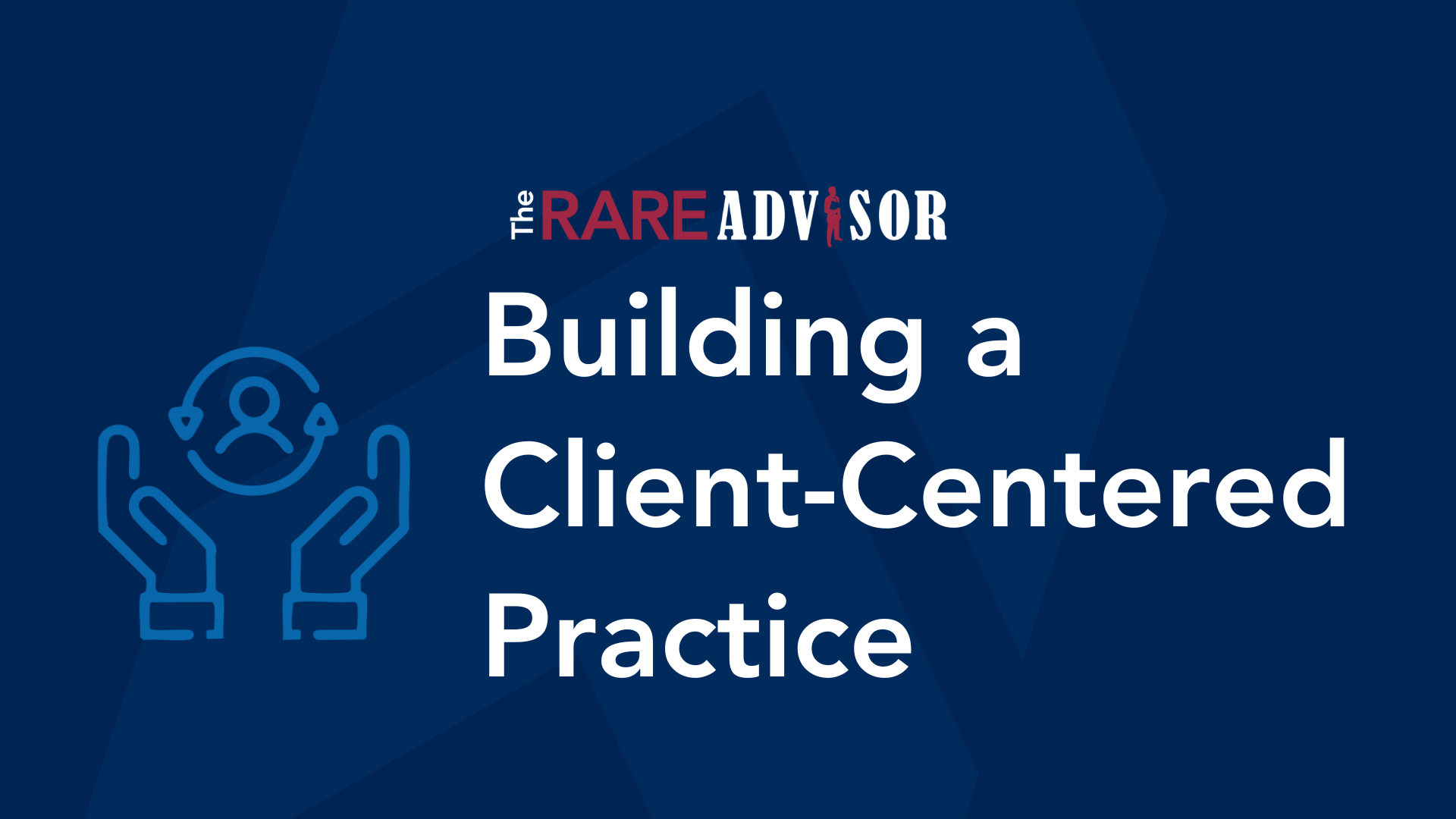Year-End Planning for Financial Advisors - Growing with Purpose

As the year winds down, it's time once again to reassess and realign your practice with your broader personal and professional goals, as we discussed in a previous article, "The Power of Planning: Why Financial Advisors Need a Yearly Game Plan."
The concept of “growing with purpose” emphasizes strategic growth that aligns not only with financial success but also with living an Ideal Life. In this follow-up article, we provide a roadmap for year-end planning that integrates personal fulfillment, goal setting, practice growth strategies, and the use of key performance indicators (KPIs) to track progress and adapt as needed.
1. The Foundation: "Growing with Purpose"
Growth should not be an aimless pursuit but rather a deliberate and focused endeavor. The idea of “growing with purpose” means that each step taken in expanding your practice should be aligned with your deeper goals. It involves setting intentions not just for revenue targets but also for how your business serves your Ideal Life. These principles suggest a path toward achieving panoramic success, encompassing gratitude, balance, and fulfillment. By applying these concepts, you can ensure that your practice growth enhances your overall life satisfaction.
2. Aligning with Your Ideal Life
To grow with purpose, you must first define what your Ideal Life looks like. This involves envisioning not just professional achievements but also the personal experiences and lifestyle you desire. Your Ideal Life should serve as the compass guiding all business activities. When you align your practice with your life goals, you create a business that serves you, rather than one that consumes you.
3. Goal Setting: 3-Month, 1-Year, and 3-Year Horizons
Establishing clear, time-bound goals is essential for focused growth. Here’s a structured approach:
- 3-Month Goals: These are short-term objectives aimed at quick wins or immediate improvements. For instance, refining your client onboarding process or enhancing communication frequency with top clients.
- 1-Year Goals: These should focus on significant practice milestones, such as increasing client advocacy or implementing new service models.
- 3-Year Goals: Long-term aspirations that might include transitioning your practice towards a higher-value market, developing proprietary processes, or preparing for a potential acquisition or succession plan.
By setting goals across these timelines, you can break down larger aspirations into manageable steps, creating momentum that builds towards sustainable growth.
4. Mapping Out Practice Growth Goals
When planning for growth, consider both qualitative and quantitative factors. It’s not only about scaling up assets and revenue, but also about enhancing the quality of your relationships and client experiences. Practice growth should focus on increasing the value you provide to clients through processes and service improvements rather than just adding more clients. Here are some key strategies:
- Segment Clients: Prioritize relationships that offer the highest value and focus efforts on converting more clients into advocates.
- Document Processes: Turn your client experience into a proprietary asset by documenting every step, ensuring consistency and scalability.
- Expand Your Team’s Capacity: Delegate commoditized tasks to team members or third-party providers, allowing you to focus on high-value activities.
5. Building Monthly and Quarterly KPIs
Key Performance Indicators (KPIs) provide a measurable way to track your progress towards your goals. Establishing monthly and quarterly KPIs will help you keep your growth on track. Examples of KPIs might include:
- New Client Acquisition Rate: The number of new clients brought on board each month or quarter.
- Client Advocacy Rate: The frequency of client referrals or introductions.
- Revenue Growth per Client: Increases in average revenue per client due to increased wallet share or deeper client engagement.
- Service Efficiency Metrics: The number of touchpoints per client, time spent on client meetings, or turnaround time for service requests.
- Asset and Revenue Targets: Establish specific, measurable goals for asset growth and revenue increases.
These targets will help guide your strategies and monitor progress over time and should be regularly reviewed to ensure that your activities align with your growth objectives.
6. Tracking and Course Corrections
Tracking your progress using the established KPIs allows for ongoing evaluation and course correction (i.e., weekly check-ins, monthly progress reviews, and quarterly course corrections). If metrics indicate a deviation from your growth targets, it's an opportunity to adjust strategies. This might mean reallocating time towards higher-value clients, refining marketing efforts, or enhancing client service processes to boost advocacy and referrals. The idea is to adopt a dynamic approach where adjustments are made based on real-time data rather than waiting for the end of the year to evaluate performance.
Best Practices:
- Clearly identify your Ideal Life, get it out of your head and down on paper
- Use the SMART methodology when setting goals: Specific, Measurable, Attainable, Realistic, Timetable
- Block time on your calendar each week to work on your practice
- Make sure to identify both qualitative and quantitative KPIs
- When defining KPIs, keep it simple
- Regularly review your plan and goals, setting reminders at intervals such as weekly, monthly, and quarterly.
Conclusion
Year-end planning provides a unique opportunity for you to reset, refocus, and realign your practice. By setting goals that extend beyond financial success to encompass living an Ideal Life, you can grow with purpose. Mapping out a strategic plan with defined growth goals, establishing meaningful KPIs, and tracking progress consistently will ensure that your growth not only drives revenue but also enhances your quality of life.
Available Resources:
- The Power of Planning: Why Financial Advisors Need a Yearly Game Plan
- Goals and KPIs Tracking spreadsheet
- Sample Annual Planning Calendar
- Marketing budget tool
- Ideal Life worksheet
Year-end planning isn't just about setting goals—it's about setting the right goals that will drive meaningful progress towards your Ideal Life while ensuring your practice continues to evolve in a purposeful way. As you plan for the coming year, take the time to reflect on what truly matters and make sure every step you take aligns with that vision.
Contact us to access the resources above or to schedule your consultation.
Author Info

Allan Oehrlein is a Practice Management Consultant at USA Financial. With over 14 years of experience in Financial Services, Allan brings a...
Related Posts

The Power of Storytelling: 3 Essential Stories Every Financial Advisor Needs
In this episode of Financial Advisor Marketing Playbook, Mark Mersman reveals how storytelling can transform your marketing and client relationships. Learn the three foundational stories every advisor needs: your origin story to build trust, your client transformation story to demonstrate results and empathy, and your philosophy story to define your beliefs and differentiate your brand. Discover practical tips for crafting these narratives and integrating them into your website, meetings, and marketing strategy.

Building a Client-Centered Practice: Insights from Duncan MacPherson & Pareto Systems
In this episode of the Rare Advisor, host Aaron Grady sits down with Duncan MacPherson of Pareto Systems to unpack the “Always On” client experience from The Blue Square Method—showing financial advisors how to move from personality-driven to process-driven, scalable firms. You’ll learn the four quadrants (Onside, Onboard, Ongoing, Onward), why a documented fit process and onboarding sequence create professional contrast, how the 12-4-2 service model competitor-proofs relationships, and why systematizing moments of truth builds advocacy and referrals. We cover turning know-how into intellectual property (playbooks/SOPs), becoming “fee-worthy” and referable, leveraging the Pareto principle for AAA clients, and shifting from B2C to B2B growth.

From SEO to AEO: How Financial Advisors Can Rank in ChatGPT & Google AI
In this episode of The Financial Advisor Marketing Playbook, Mark Mersman explores the fast-emerging concept of Answer Engine Optimization (AEO)—how advisors can adapt their websites and content strategies for the AI-driven search era. As traditional SEO gives way to AI search tools like ChatGPT and Google’s AI Overviews, Mark explains what this shift means for financial advisors and how to stay visible in a world where consumers ask questions directly to AI instead of clicking through search results. He shares practical, actionable steps—like writing with user intent in mind, expanding website depth and breadth, structuring Q&A sections, and earning external credibility—to help advisors ensure their content is surfaced in AI-powered search results. If you want your firm to show up when prospects ask financial questions to AI, this episode is a must-watch.

The Power of Storytelling: 3 Essential Stories Every Financial Advisor Needs
In this episode of Financial Advisor Marketing Playbook, Mark Mersman reveals how storytelling can transform your marketing and client relationships. Learn the three foundational stories every advisor needs: your origin story to build trust, your client transformation story to demonstrate results and empathy, and your philosophy story to define your beliefs and differentiate your brand. Discover practical tips for crafting these narratives and integrating them into your website, meetings, and marketing strategy.

Building a Client-Centered Practice: Insights from Duncan MacPherson & Pareto Systems
In this episode of the Rare Advisor, host Aaron Grady sits down with Duncan MacPherson of Pareto Systems to unpack the “Always On” client experience from The Blue Square Method—showing financial advisors how to move from personality-driven to process-driven, scalable firms. You’ll learn the four quadrants (Onside, Onboard, Ongoing, Onward), why a documented fit process and onboarding sequence create professional contrast, how the 12-4-2 service model competitor-proofs relationships, and why systematizing moments of truth builds advocacy and referrals. We cover turning know-how into intellectual property (playbooks/SOPs), becoming “fee-worthy” and referable, leveraging the Pareto principle for AAA clients, and shifting from B2C to B2B growth.

From SEO to AEO: How Financial Advisors Can Rank in ChatGPT & Google AI
In this episode of The Financial Advisor Marketing Playbook, Mark Mersman explores the fast-emerging concept of Answer Engine Optimization (AEO)—how advisors can adapt their websites and content strategies for the AI-driven search era. As traditional SEO gives way to AI search tools like ChatGPT and Google’s AI Overviews, Mark explains what this shift means for financial advisors and how to stay visible in a world where consumers ask questions directly to AI instead of clicking through search results. He shares practical, actionable steps—like writing with user intent in mind, expanding website depth and breadth, structuring Q&A sections, and earning external credibility—to help advisors ensure their content is surfaced in AI-powered search results. If you want your firm to show up when prospects ask financial questions to AI, this episode is a must-watch.

